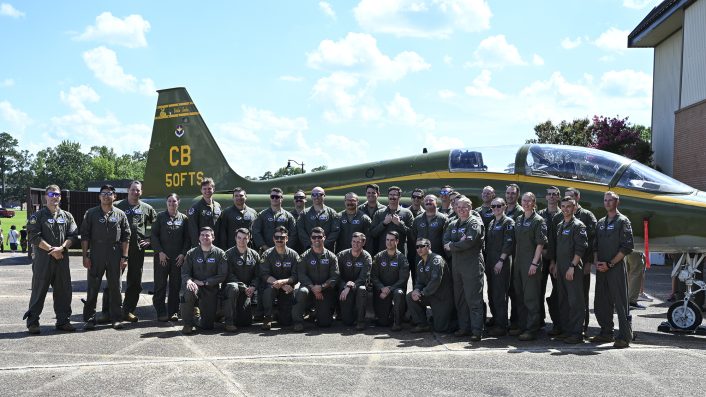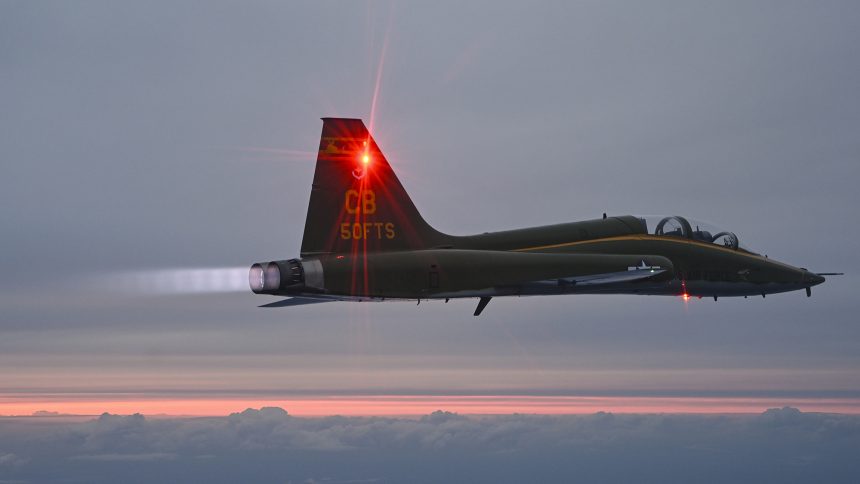After more than five decades of advanced jet training, the 50th FTS is inactivated and its legacy absorbed into a new ‘super-squadron’ at Columbus AFB.
The 50th Flying Training Squadron, known as the ‘Strikin’ Snakes,’ was inactivated in a formal ceremony at Columbus Air Force Base, Mississippi, on July 2, 2025. The inactivation is one of many changes to the way formal flight training is conducted across the United States Air Force. Columbus AFB is the implementation base for many of these changes.
The inactivation of the 50th FTS is a major change for the base as the unit has trained thousands of pilots in the advanced undergraduate pilot training role since it began flying the Northrop T-38A Talon at Columbus on June 1, 1972. Through the years the pilots trained by the Strikin’ Snakes have gone on to fly a variety of aircraft, but after the introduction of Specialized Undergraduate Pilot Training in the early 1990s, the 50th FTS was the next step in the pipeline for fighter and bomber pilots training at Columbus.
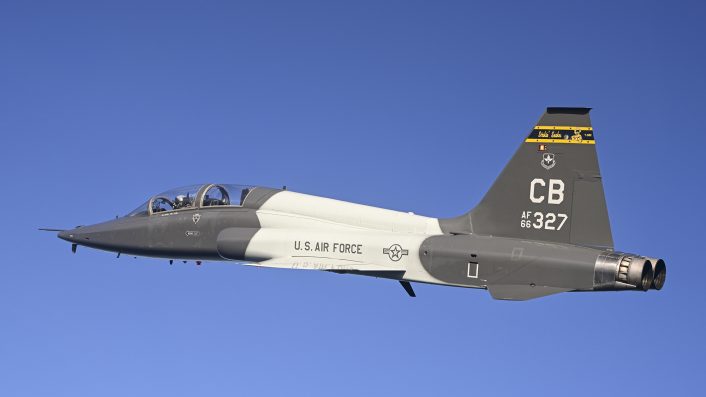
However, the closure of the 50th FTS does not mean the fighter/bomber pilot training mission at Columbus ends.
The aircraft, seasoned instructor pilot roster, equipment and facilities will be combined with the co-located 49th Fighter Training Squadron, ‘Green Knights’ into what Lt. Col. Nicole ‘Jose’ Jansen describes as Air Education and Training Command’s first ‘super-squadron’ of T-38s. Jansen was the 50th FTS Commander at inactivation and officer responsible for casing the colors at the end of the formal ceremony. Casing the colors is a time-honored military tradition of rolling the unit guidon and campaign streamers and placing them in an olive-drab fabric sleeve for long-term storage.
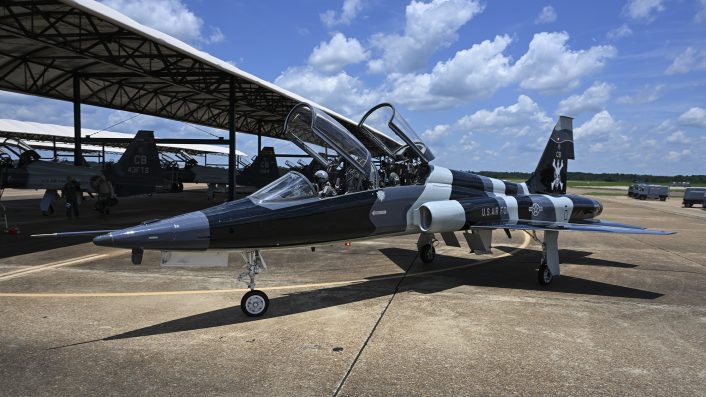
Originally formed on Nov. 20, 1940, and activated on Jan. 15, 1941, as the 50th Pursuit Squadron of the U.S. Army Air Corps, the Strikin’ Snakes flew the Curtiss P-40 Warhawk from Hamilton Field, California, tasked with defense of the West Coast from a potential Japanese invasion. This is where it gained a ‘Fighter Squadron’ designation in May 1942.
The squadron then moved to Iceland Base Command in late 1942 where it conducted aerial intercepts of German attack, bomber and reconnaissance aircraft as its primary mission while providing anti-submarine patrol and ship convoy escort through the North Atlantic as a secondary mission. Pilots of the 50th FS downed five enemy aircraft in combat including a Junker Ju-88 bomber. As the war in Europe wound down, the 50th FS was assigned to the Eighth Air Force, ‘Mighty Eighth,’ in England before inactivation on August 9, 1944.
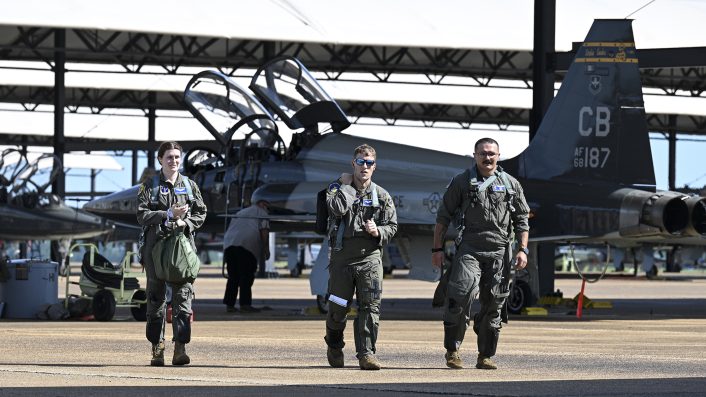
The 50th Fighter Squadron was dormant until reactivation at Columbus over 50 years ago as the 50th Flying Training Squadron flying all-white Northrop T-38A Talons. Beginning in 1998 the AETC T-38 fleet moved to a two-tone tactical camouflage scheme known as the ‘Shamu-scheme’ as it closely replicates the placement of the contrasting colors of Killer Whales and its most famous Killer Whale—Shamu. In 2002 the 50th FTS transitioned to the T-38C Talon.
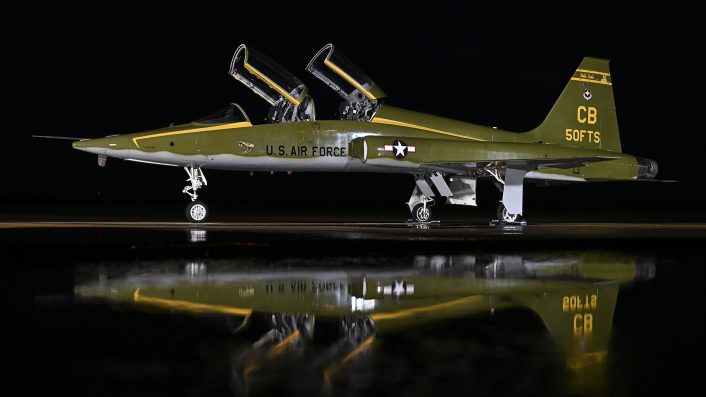
The closing of the 50th Flying Training Squadron and merging of aircraft with the 49th Fighter Training Squadron allows the USAF to streamline the administration and leadership staff into one, creates a single advanced undergraduate pilot training syllabus for fighter/bomber pilots which combines the supersonic, advanced flying course previously taught by the 50th FTS with the Introduction to Fighter Fundamentals (IFF) course.
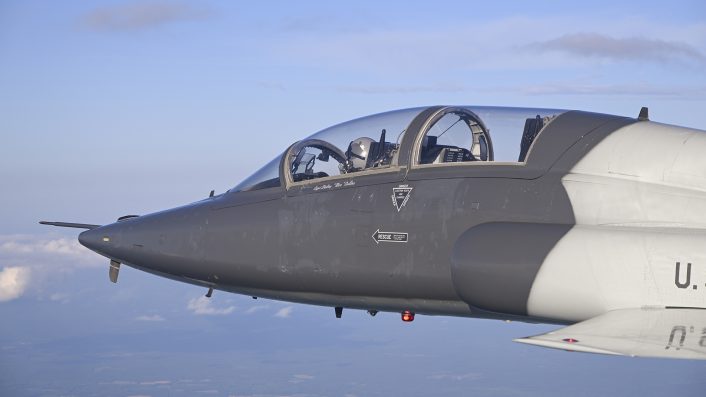
Students participating in this single, advanced fighter/bomber fundamentals syllabus will continue operating the 60 AT-38C/T-38C Talons assigned to Columbus under a redesignated 49th Flying Training Squadron for the near future. The new syllabus is still being refined by AETC and may be tweaked slightly to deliver the best training for the Air Force and allied nations possible.
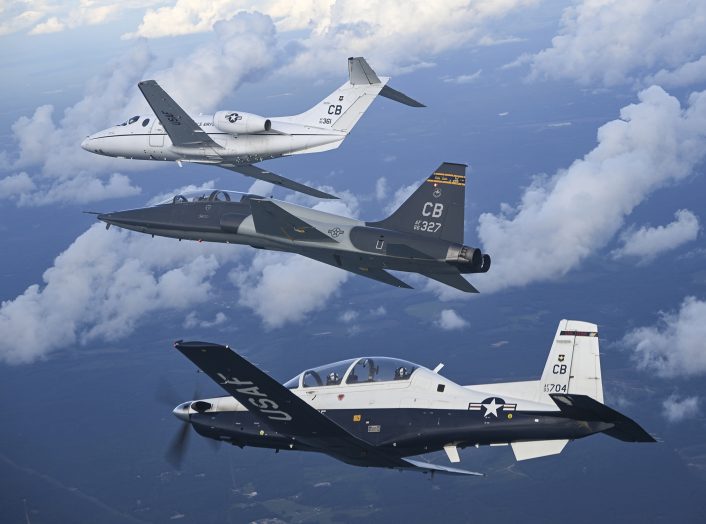
Mention of the first ‘super-squadron’ of T-38s at the 50th FTS inactivation ceremony indicates this may be the unannounced path forward for AETC Flight Training Wings operating the aging T-38 fleet.
Many, but not all, USAF T-38s have already undergone major upgrades under a series of maintenance and sustainment programs which converted many T-38As to T-38C standards. The T-38C designation came about through the Avionics Upgrade Program (AUP) with the addition of modern digital cockpits, radios, ADS-B, and associated support equipment plus a video data transfer system and heads-up display.
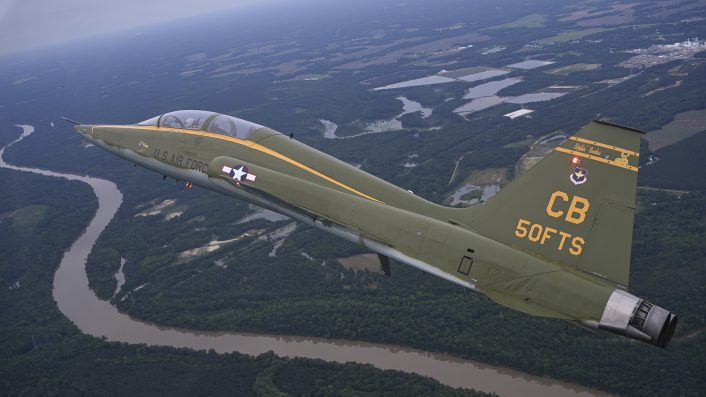
The Propulsion Modernization Program (PMP) upgraded the General Electric J85-GE-5A afterburning engines to -5R standards. At the same time the Pacer Classic III Service-Life Extension Program (SLEP) addressed structural fatigue issues and redesigned intakes to prevent compressor stalls. The Escape Systems Upgrade Program (ESUP) added Martin-Baker US16T zero/zero ejection seats. Pacer Classic is scheduled until 2029 with the Talon Repair Inspection and Maintenance (TRIM) Program is a simultaneous program to quickly identify and address issues across the Talon fleet as part of sustaining maintenance. These programs are designed to take the T-38Cs to the finish line and allow a smooth transition once the T-7A Red Hawk enters service.
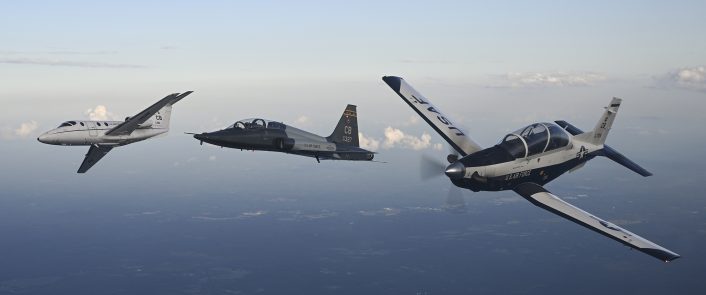
While the closure of the 50th FTS Strikin’ Snakes was a necessary step in the eyes of Air Force leadership to streamline training and save money, it was a sad ending for the Strikin’ Snakes.
Acknowledgments: Mr. Adam Prince, 14th FTW Public Affairs Officer, 2Lt. Doug Armstrong, 14th FTW Public Affairs, Capt. Austin ‘Saw’ Dreyer, 50th FTS Instructor Pilot, LtC. Michael Coghlan, 14th Medical Group and LtC. Nicole ‘Jose’ Jansen, 50th FTS Commander.
